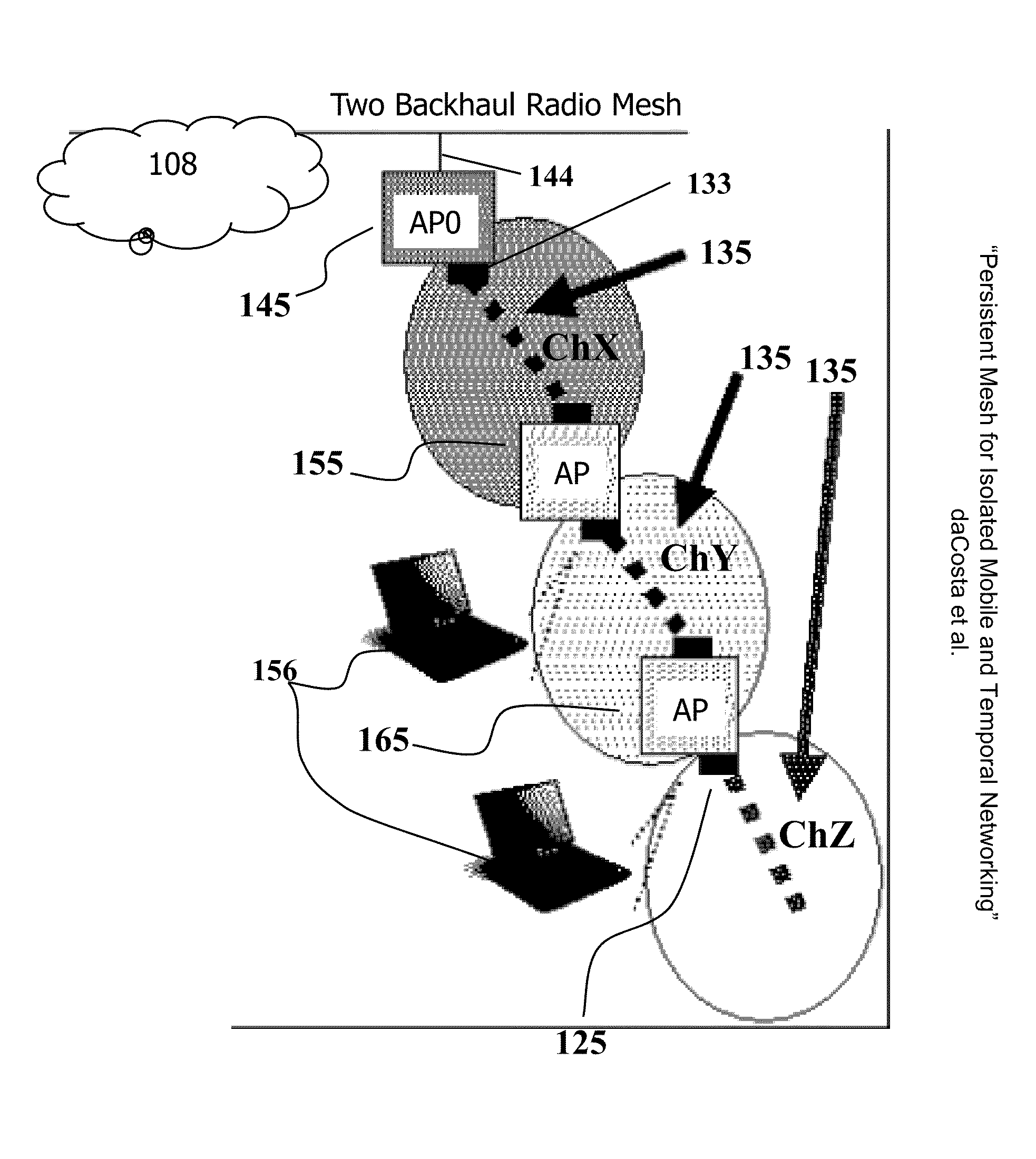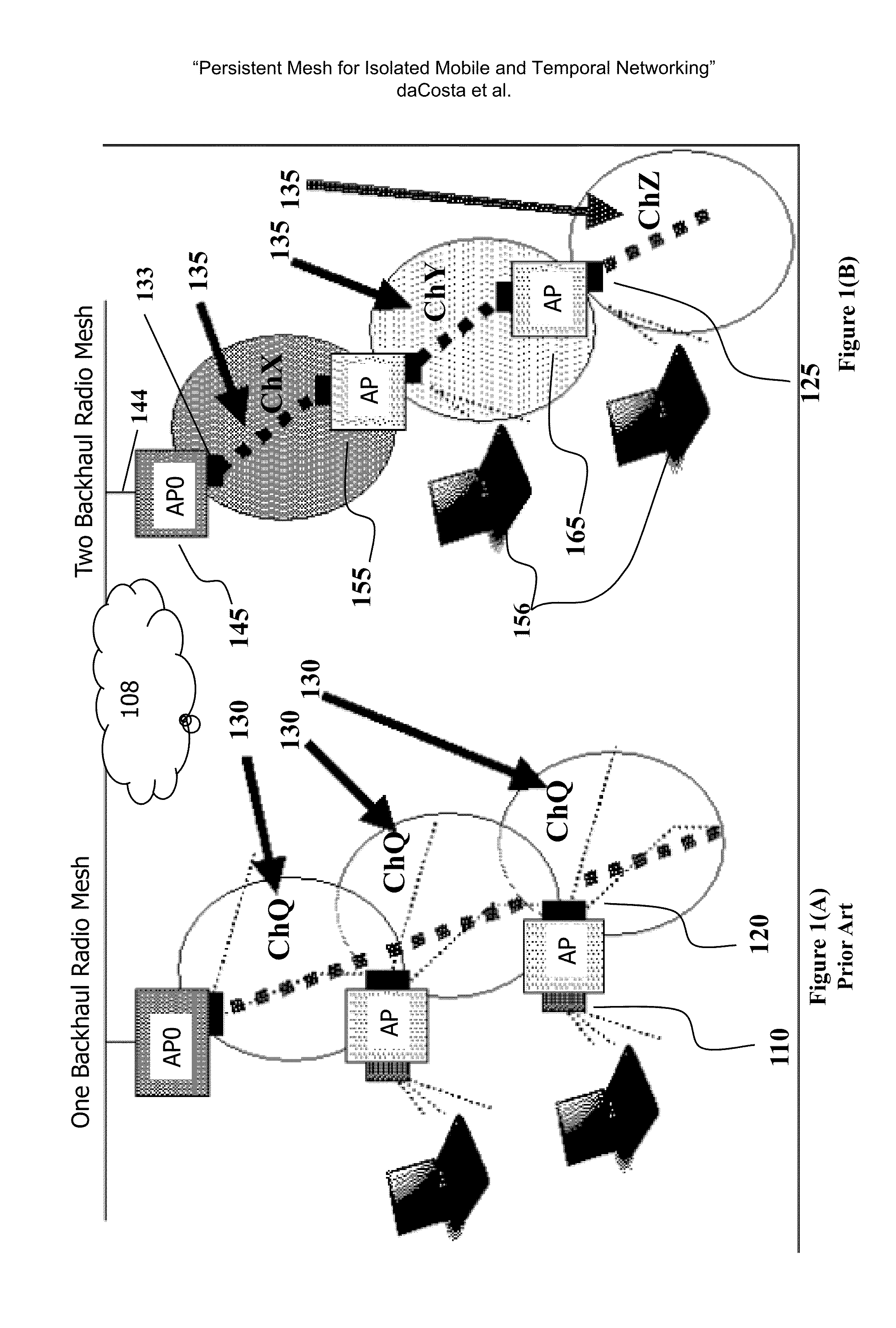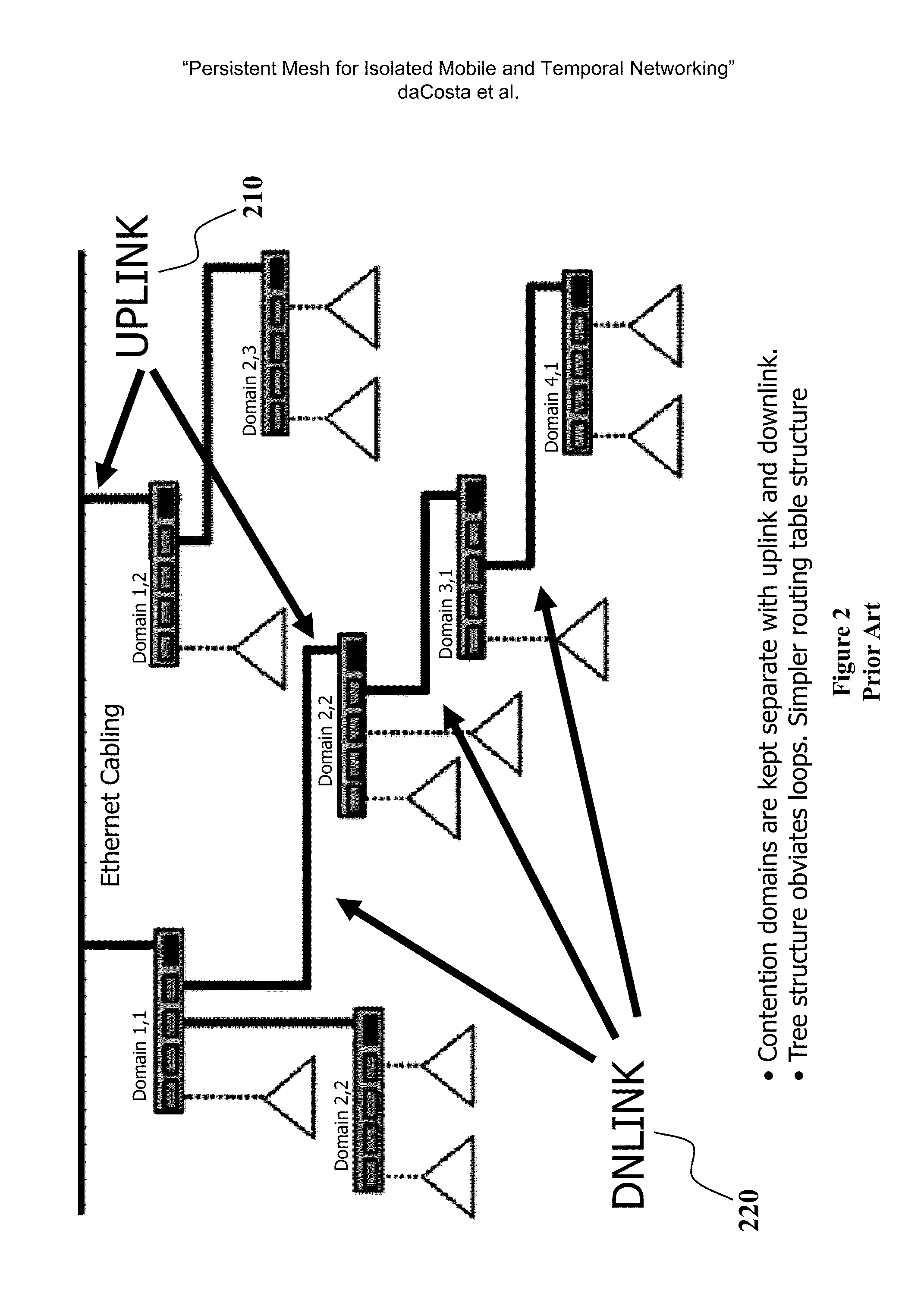Persistent mesh for isolated mobile and temporal networking
a technology of mobile and temporal networks and meshes, applied in the direction of wireless commuication services, network topologies, electrical appliances, etc., can solve the problems of mesh network creation, channel cannot be too small, and certain difficulties are created by wireless mesh networks, so as to facilitate reconnection, maintain a structure to support connectivity within the sub-part, and limit the amount of time a sub-part lacks external network connectivity
- Summary
- Abstract
- Description
- Claims
- Application Information
AI Technical Summary
Benefits of technology
Problems solved by technology
Method used
Image
Examples
Embodiment Construction
[0041]The foregoing summary, as well as the following detailed description of certain embodiments of the present invention, will be better understood when read in conjunction with the appended drawings.
[0042]In some embodiments of the instant invention, the inter-access point communication occurs using agreed-upon wireless communication protocols, but a mesh may employ any communications means, wired or wireless. Further, one or more of the access points may be connected to an external network whereby client devices in communication with the mesh are capable of accessing the same external network.
[0043]Depicted in FIG. 1(B) and in FIG. 2 are two examples of mesh networks featuring links to an external network. Turning first to FIG. 1(B), depicted there are three nodes 145, 155, 165, wherein each node comprises an uplink connection and a downlink connection. Each node is considered an access point or “AP,” and each node is physically identical, in one embodiment. For example, the top...
PUM
 Login to View More
Login to View More Abstract
Description
Claims
Application Information
 Login to View More
Login to View More - R&D
- Intellectual Property
- Life Sciences
- Materials
- Tech Scout
- Unparalleled Data Quality
- Higher Quality Content
- 60% Fewer Hallucinations
Browse by: Latest US Patents, China's latest patents, Technical Efficacy Thesaurus, Application Domain, Technology Topic, Popular Technical Reports.
© 2025 PatSnap. All rights reserved.Legal|Privacy policy|Modern Slavery Act Transparency Statement|Sitemap|About US| Contact US: help@patsnap.com



